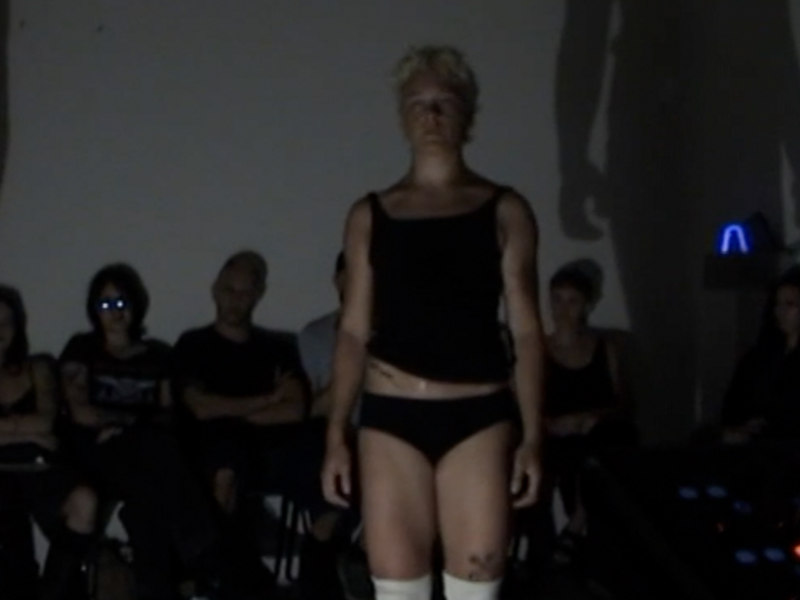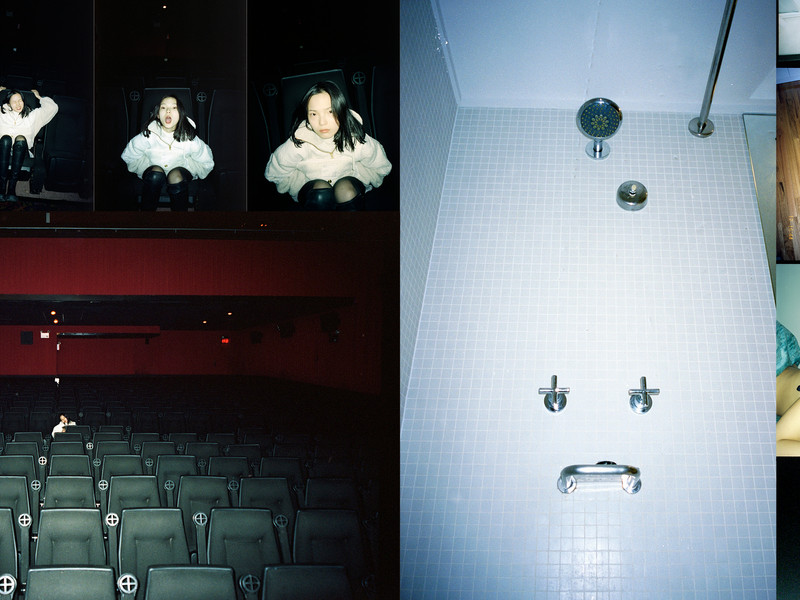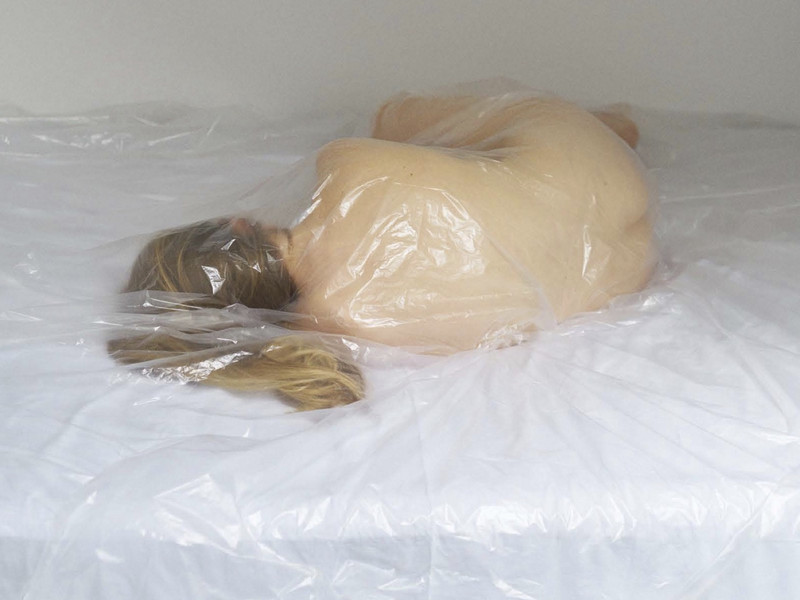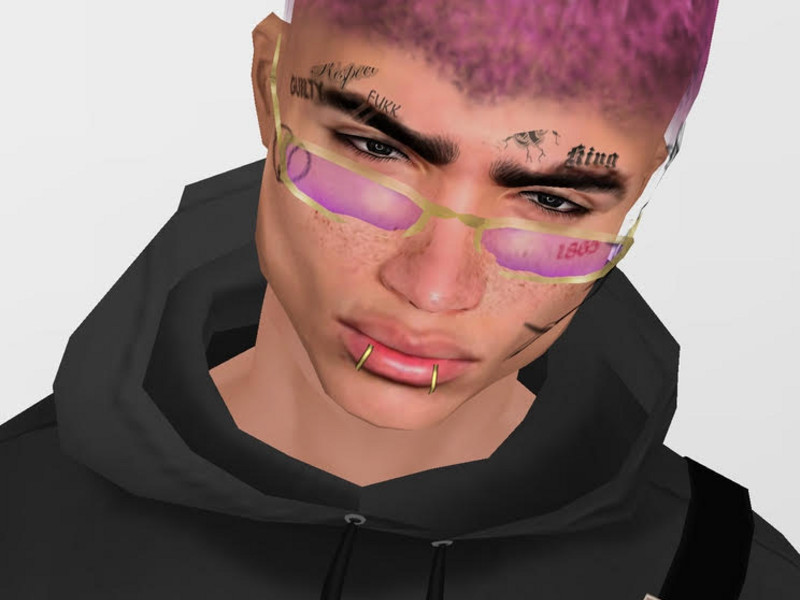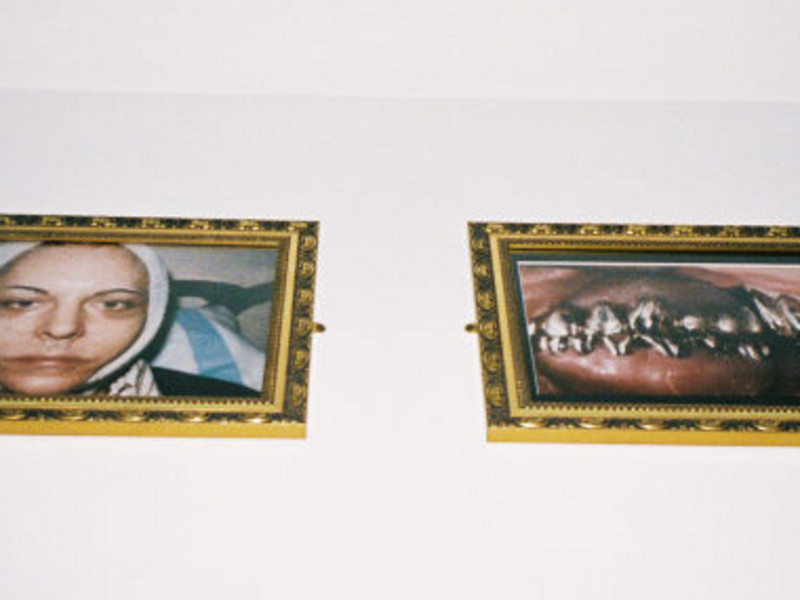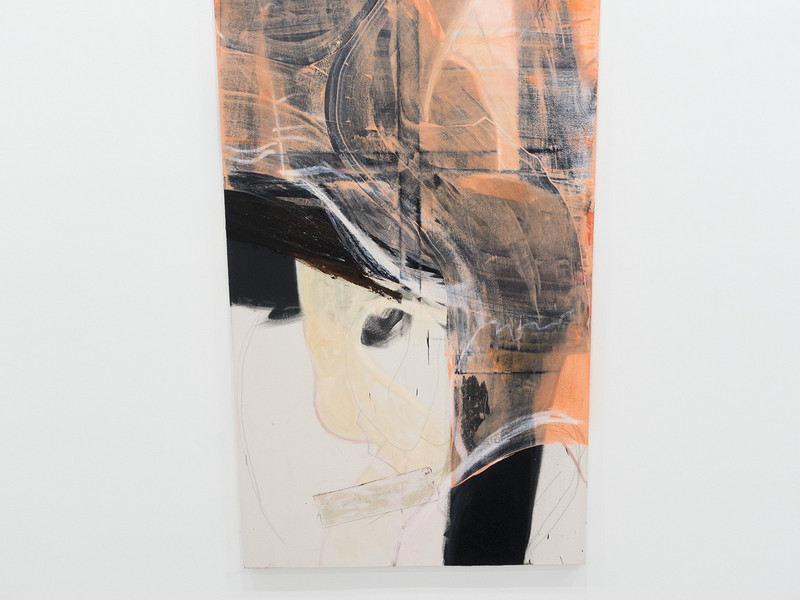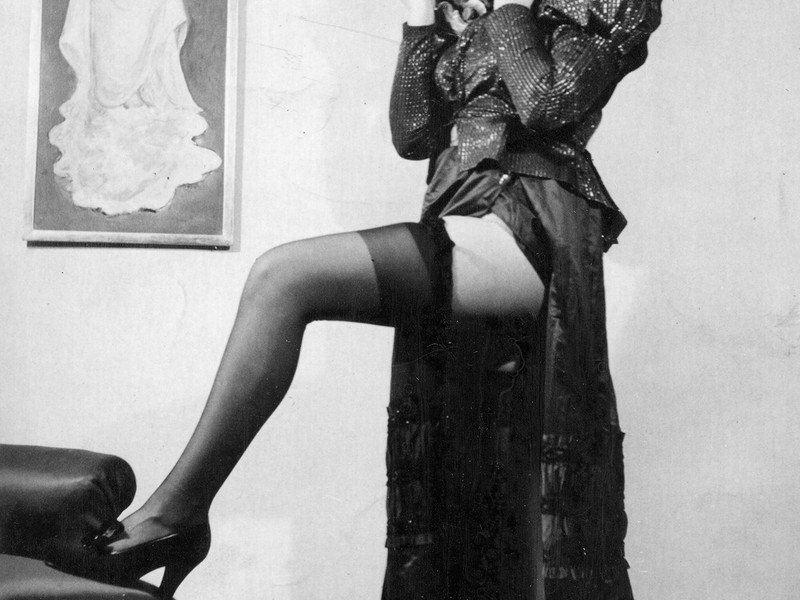The Leisure of Love

Cheryl Pope spoke, and office listened. See what she had to say below.
When were you first struck by “the concept of Leisure,” in relation to you and your partner’s biracial relationship?
We spent a month living in Miami, both taking a break from our studio practice, we went to the beach every day. It was the first time for either of us to take so much time out of the studio and just relax. We read, went to the gym, and literally just chilled at the beach the entire month. It was natural to notice the luxury of this leisure time and also the positive effects. I was looking around to see who else was there, who has access to leisure, what is the history of leisure, what is the language of leisure, and what are the effects of leisure.
Why did you feel called to create this series?
I think in times of crisis, love is needed most. I wanted to create images of love, of the natural and normality of different people being together, being intimate and vulnerable, and being in love. I wanted to create works that are sensual and primal, a reminder of how our fundamental human desires connect us.
Did you envision this series before you created it, or did you discover it along the way?
It was a combination. This technique was also totally new for me, so I was also learning my language with the medium in the process of making the works. And I knew the imagery I wanted in general, but there was and continues to be so much discovery along the way. I think that’s what keeps the work feeling alive. When the artist is discovering something within the process of making the work, the work is the evidence of that discovery, it carries the spirit of that discovery and I think that energy evokes a specific kind of response because of it.

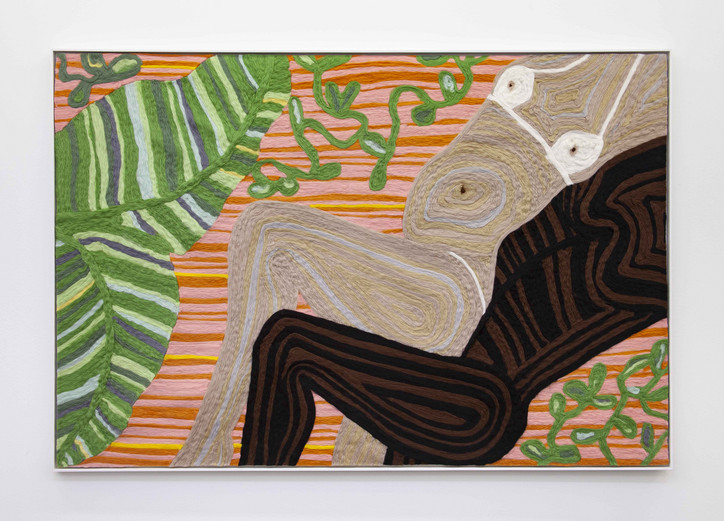
Above: 'Woman and Man Reclining on Striped Mat XI' and 'Woman and Man Reclining on Striped Mat X'.
How did you begin this series of pieces?
The process is really sculptural for me. I love being physical with my work, this material really allowed me to enter the two-dimensional plane in a three-dimensional way. I first lay out the ground cloth (cashmere) and then use long strands of the roving (unspun, raw wool) to draw out the figures.
Why did you choose to use needle and felt as your medium? How do you feel the material you chose affects the viewers relationship with the piece?
I think one of the most beautiful and important qualities of this work is the material and the process. That fact that it is all hair. That it is all natural and simply created by hair locking to other hairs (the needle-punching literally binds the wool and the support together). I think this material evokes a sensuality, the tactile surface asks to be touched, and though that impetus is denied in a traditional gallery setting, that desire still brings the viewer into their body.
Could you describe the relationship between the human forms in each piece?
The two figures lying together are intimate, vulnerable, exposed. They are close in relation to one another in comfort, and yet there is a humor, a complexity, there is a sense that they are still finding each other within that plane of comfort. But they value love and vulnerability, and they know that through their exposure, they are sharing and celebrating it with the viewer.
Do you find that social and political issues often shape a lot of your work?
Absolutely! It would be impossible for it to not.
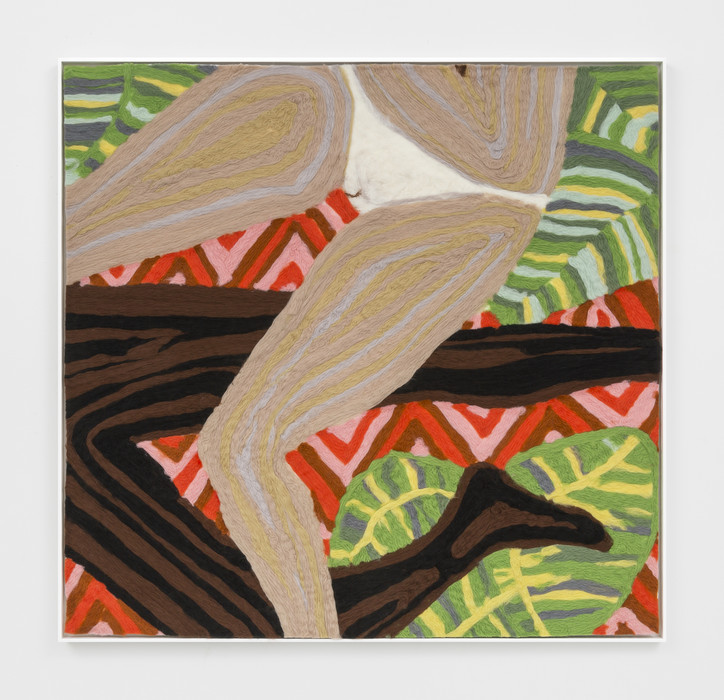
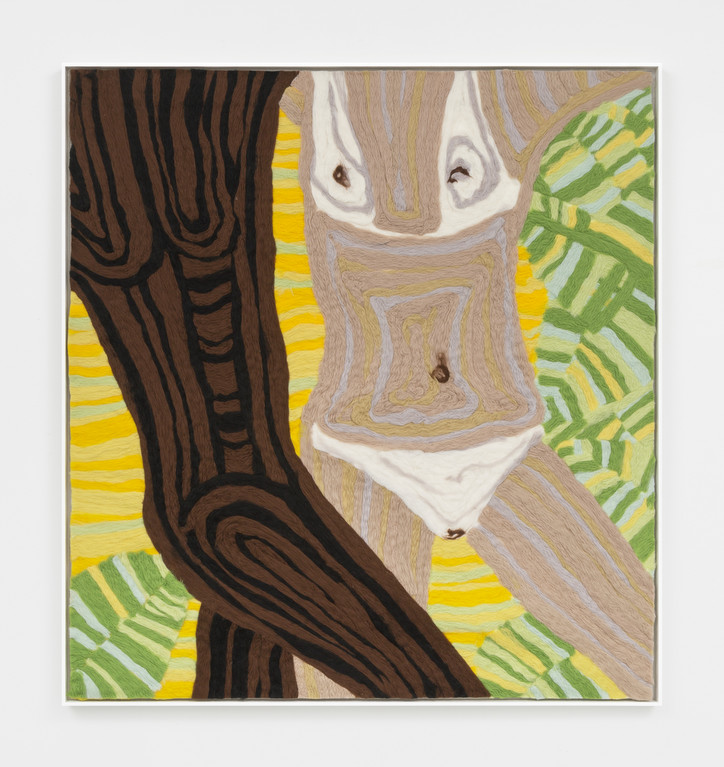
Above: 'Woman and Man Reclining on Striped Mat V' and 'Woman and Man Reclining on Striped Mat VII'.
What is the symbolic intention behind the background colors and nature elements?
The cropping and composition of the work maintain an indistinguishability between an interior and exterior location. So, it co-exists as both a private and public space, similar to how a towel at the beach becomes your private space, your real estate for the time you are there, yet it is very much a public locale. The color stories emerge from travel in warmer, tropical climates with colorful architecture, specifically in the Dominican Republic and in South Beach Miami.
The plants are also really important. They are tropical plants and for me, being from the Midwest, when I see a palm tree for example, I automatically think holiday. I have a feeling of vacation, of leisure, time away, the beach. And my partner is from the Caribbean, so palms for him have a feeling of home. I think this duality of associations within the history of leisure, holiday, geography, and a love story, is compelling.
Why did you choose to leave both figures faceless?
I want to keep a looseness to the identity. It is biographical and also not, it is not just about me and my partner, it is about many, it is about the histories of love stories across time. It is universal.
What message do you hope will translate to your audience through your work?
Gordon Parks said: “There is something about us that goes deeper than blood or black and white. It is our common search for a better life and a better world.” I hope that people feel love, see beauty in vulnerability, humor in attempted articulations, and a joy in the magical love stories that defy all politics and wars.
'BASKING NEVER HURT NO ONE' is on view through August 17th at Monique Meloche Gallery in Chicago. All images courtesy the gallery. Lead image: 'Woman and Man Reclining on Striped Mat VII'.


